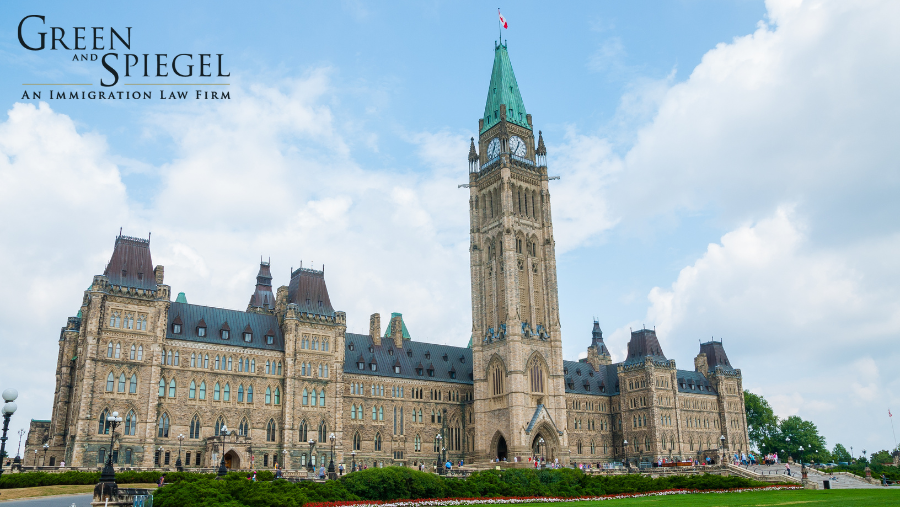Introduction:
As a result of a landmark Supreme Court of Canada decision released on May 10th, 2019—Canada (Public Safety and Emergency Preparedness) v. Chhina[1]—immigration detainees now have the opportunity to challenge the legality of their detention through the writ of habeas corpus.
Habeas Corpus is a historic and longstanding remedy that allows detainees to challenge their detention before an impartial and independent decision maker. It is enshrined in Section 10(c) of the Canadian Charter of Rights and Freedoms [The Charter]: “[e]veryone has the right on arrest or detention… to have the validity of the detention determined by way of habeas corpus and to be released if the detention is not lawful.”[2]
Justice Karakatsanis for the Majority in Chhina writes that “The writ of habeas corpus is an ancient legal remedy that remains fundamental to liberty and the rule of law.”[3] He elaborates further that habeas corpus allows those in detention to submit an application before the provincial Superior Court and “demand to know whether the detention is justified in law.”[4] If the authorities cannot provide sufficient justification for continued detention, the person must be released.
Before the ruling in this case, the law was unclear as to whether the Superior Court had the jurisdiction to hear applications for habeas corpus from immigration detainees, due to the existence of an alternative remedy to challenge detention—the detention review scheme under the Immigration and Refugee Protection Act (IRPA). The decision in this case thus provides a clear directive that immigration detainees have the right to apply for habeas corpus, in addition to the remedies available to immigration detainees under IRPA.
Facts and Procedural History:
The respondent in this case, Mr. Tusif Ur Rehman Chhina, was a Pakistani national who had come to Canada in 2006 and obtained refugee status two years later. In 2012, he was ordered to leave Canada due to misrepresentation on his refugee application and criminality. Mr. Chhina was eventually placed in immigration detention in maximum security conditions, where he was in lockdown for twenty-two and a half hours per day.[5] Immigration officials through monthly ‘detention reviews’ continued to uphold Mr. Chhina’s detention.
After 13 months in detention, Mr. Chhina filed an application for habeas corpus, arguing that his detention was unlawful under the following grounds: (1) The detention was lengthy and indeterminate and (2) The conditions of his detention were inappropriate and breached his rights under ss. 7 and 9 of the Charter.[6]
The chambers judge declined to consider Mr. Chhina’s application due to the supposed lack of jurisdiction, a decision that was appealed to the Alberta Court of Appeal, and subsequently to the Supreme Court of Canada.
Issues and Ruling:
One of the primary issues in the appeal was “whether the IRPA provides a review procedure that is at least as broad and advantageous as habeas corpus regarding the specific challenges to the legality of the detention raised by the habeas corpus application.”[7] The Supreme Court of Canada decided that the procedures under IRPA were not as broad or as advantageous for detainees in situations of lengthy and uncertain duration.[8]
One of the distinctions that the Court drew between habeas corpus and the detention review scheme under IRPA was that in detention reviews, immigration officers often base their decisions on previous detention review decisions. In contrast, in a habeas corpus application the judge assesses all the factors in a fresh and independent manner. Secondly, in a detention review the onus is on the detainee to demonstrate why they should not be detained, while under habeas corpus the onus is on the authorities to demonstrate that the person should continue to be detained.[9]
In addition, the scope of review before the Federal Courts when challenging detention review decisions is narrower (and thus less advantageous) than a habeas corpus application before the Superior Court.[10] Finally, a habeas corpus application can be brought before a judge much more quickly compared to detention reviews. While a first detention review must be held within 48 hours of the person being detained, and a second must take place within 7 days, subsequent detention reviews after the first two only take place every 30 days.[11] Obtaining leave for judicial review of a detention review can take up to an additional 85 days.[12] For all these reasons, the majority of the Supreme Court justices found that the remedies available under IRPA were not as broad or advantageous for detainees in situations of lengthy and uncertain duration, and thus habeas corpus should remain available to immigration detainees.
Conclusion:
The decision of the Supreme Court of Canada in Chhina is an important development as it provides immigration detainees with an additional, more advantageous remedy to challenge detention. It is also notable that the Court highlights serious procedural issues under the IRPA detention review regime that should be rectified in order to allow immigration detainees a better opportunity to be released in the event of unlawful detention.[13] The ruling provides a further safeguard for immigration detainees that have been unable to challenge their detention at the Federal Court, through a more expedient and comprehensive remedy by way of habeas corpus at the Superior Court.
Alexander Toope- Summer Law Student at Green and Spiegel
[1] Canada (Public Safety and Emergency Preparedness) v. Chhina, 2019 SCC 29 [Chhina].
[2] Canadian Charter of Rights and Freedoms, Part I of the Constitution 1-151 Act, 1982, being Schedule B to the Canada Act 1982 (UK), 1982, c 11 at s. 10(c).
[3] Chhina, supra note 1.
[4] Ibid.
[5] Ibid at para 9.
[6] Ibid at para 10.
[7] Ibid at para 6.
[8] Ibid at para 59.
[9] Ibid at paras 60-62.
[10] Ibid at para 59.
[11] Immigration and Refugee Protection Act, SC 2001, c 27 at s. 57.
[12] Chhina, supra note 1 at para 66.
[13] Immigration and Refugee Board of Canada, Report of the 2017/2018 External Audit (Detention Review): https://irb-cisr.gc.ca/en/transparency/reviewsaudit-evaluations/Pages/ID-external-audit-1718.aspx.




